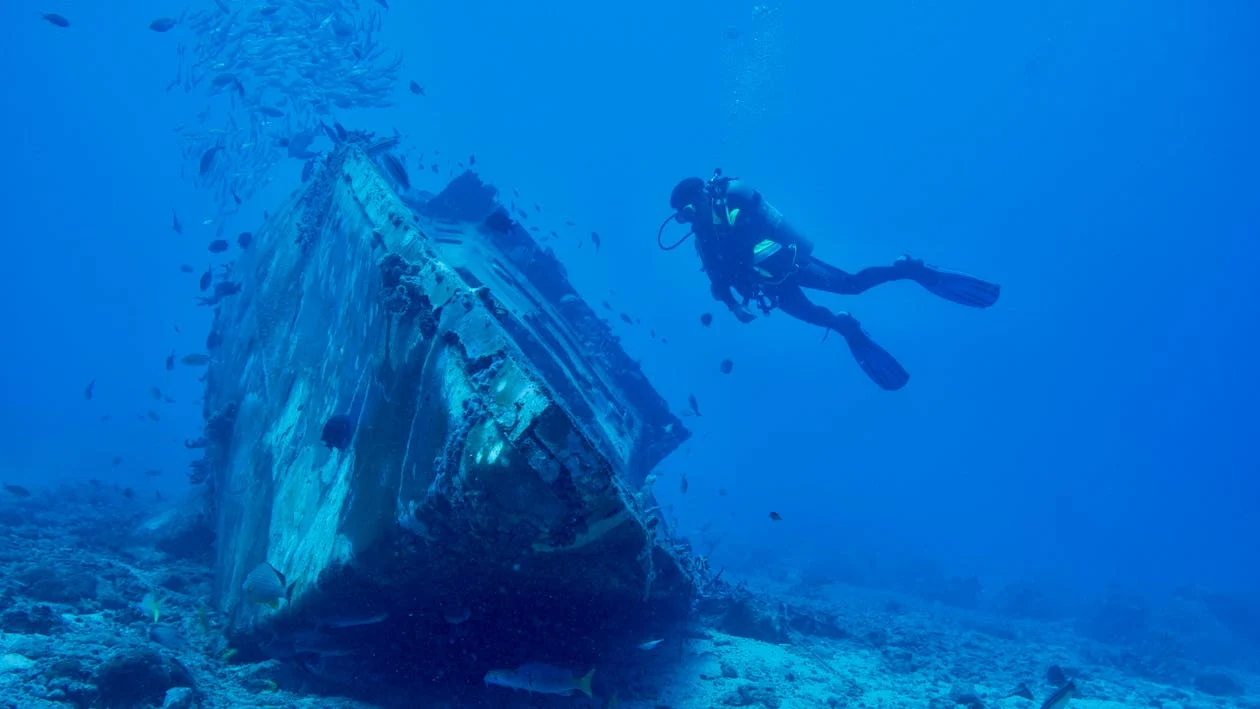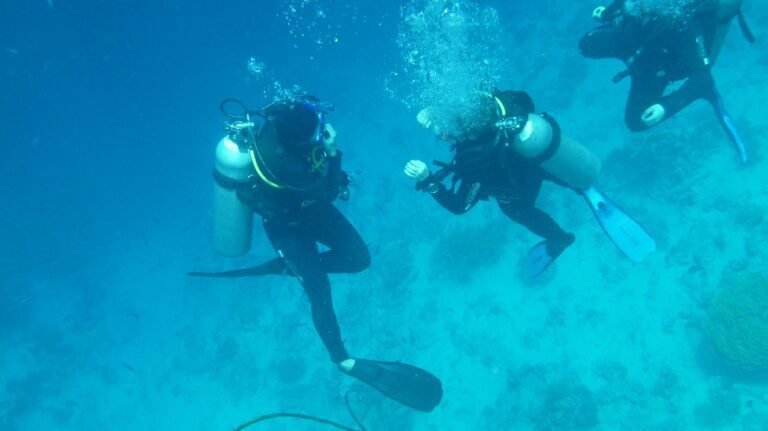How to Equalize Your Ears for Scuba Diving: A Quick Guide

Ever feel sharp ear pain while diving? That’s your body reacting to pressure changes.
Equalizing your ears is crucial for comfort and safety while scuba diving. The good news: it’s a simple skill that becomes second nature with practice.
This guide covers why it matters, effective techniques, and tips for easier dives—whether you’re a beginner or looking to improve.
Why You Need to Equalize Your Ears While Diving
Diving into the underwater world is thrilling, but it comes with challenges. One of the most common is dealing with the pressure on your ears.
Knowing why equalizing is important makes it easier to practice and master.
Understanding How Water Pressure Affects Your Ears
As you descend, water pressure around you increases quickly. Meanwhile, the air pressure in your middle ear stays the same.
This creates an imbalance that presses on your eardrum, causing discomfort or pain.
Equalizing balances the pressure inside your ears with the water pressure outside, relieving the strain.
The Dangers of Not Equalizing
If you don’t equalize properly, you risk barotrauma—damage caused by pressure differences.
Symptoms can include mild discomfort, severe pain, dizziness, or even a ruptured eardrum. In serious cases, untreated barotrauma can lead to long-term hearing loss or infections.
Benefits of Proper Equalization
Equalizing your ears the right way prevents injuries and enhances your diving experience. Here’s how:
- It keeps you safe by lowering the risk of ear-related problems.
- You can dive longer and more comfortably since your body feels less stress.
- It builds confidence to explore deeper, knowing you can handle pressure changes.
Equalizing isn’t just a skill; it’s essential for safe and enjoyable dives. Once you master it, you can fully focus on the adventure underwater.
Simple Techniques to Equalize Your Ears

Mastering how to equalize your ears is crucial for safe and comfortable diving. Thankfully, there are several simple methods to help balance the pressure effectively.
Here are the most common ones:
1. Swallowing and Moving Your Jaw
This is the easiest and most natural way to equalize, making it great for beginners. Swallowing or moving your jaw activates muscles that open your Eustachian tubes, letting air flow into your middle ear to balance the pressure.
How to Do It:
- Pause as you descend and swallow.
- If swallowing isn’t enough, try yawning or wiggling your jaw.
- Descend slowly to give this method more time to work.
2. Pinch and Blow (Valsalva Maneuver)
The Valsalva maneuver is a popular choice among divers. It works by gently blowing air into your middle ear through your Eustachian tubes.
How to Do It:
- Pinch your nose and close your mouth.
- Blow gently, as if trying to exhale through your pinched nose.
- Avoid blowing too hard to prevent ear damage.
When to Use:
This technique is ideal for deeper dives or when swallowing doesn’t work.
3. Frenzel Technique
The Frenzel technique is an advanced method often used by free divers and experienced scuba divers. It’s especially effective for equalizing at greater depths.
How to Do It:
- Pinch your nose shut.
- Close your vocal cords, like you’re about to lift something heavy.
- Use your tongue to push air toward your Eustachian tubes.
Why It’s Advanced:
This method takes practice but is safer and more effective than the Valsalva maneuver for extreme depths.
Pro Tip:
Practice these techniques on land before diving. This helps you figure out which method works best for you and ensures you’re confident using it underwater.
Tips for Equalizing More Easily

Equalizing your ears can sometimes be tricky, especially if you’re new to diving or dealing with mild congestion. These tips can help make the process smoother and more effective:
1. Start Early: Equalize Before You Feel Discomfort
The key to easy equalization is starting before you feel pressure or pain. Waiting too long makes it harder to open your Eustachian tubes.
- Begin equalizing on the surface or as soon as you start descending.
- Make it a habit to equalize every meter (3 feet) to stay ahead of the pressure.
2. Descend Slowly and Steadily
A slow, controlled descent gives your body time to adjust. Rushing can make it harder to equalize and increase the risk of injury.
- Use a descent line for support if there’s one available.
- Pause if you feel resistance or discomfort, and equalize before continuing.
3. Stay Hydrated
Dehydration can cause congestion, making it harder to equalize. Keeping hydrated reduces blockages and helps your body function better.
- Drink plenty of water before and after your dive.
- Avoid alcohol and caffeine, which can lead to dehydration.
4. Practice Techniques on Land
Equalizing is a skill you can practice outside of the water to improve your comfort and effectiveness.
- Practice swallowing, the Valsalva maneuver, or the Frenzel technique at home or in a pool.
- Focus on mastering the Frenzel technique if you plan to dive deeper.
5. Stay Relaxed and Avoid Stress
Tension can make equalizing more difficult. Staying calm helps you focus and improves your technique.
- Take slow, deep breaths to relax during your descent.
- Avoid clenching your jaw, as it can block the Eustachian tubes.
6. Avoid Diving When Sick or Congested
If you feel slightly congested before diving, take steps to clear your sinuses and Eustachian tubes.
- Gently blow your nose to remove mucus.
- Use a saline spray or decongestant (if recommended by your doctor) to reduce inflammation.
Congestion from a cold, allergies, or sinus infection can block your Eustachian tubes, making it nearly impossible to equalize. If you’re not feeling 100%, it’s better to reschedule your dive.
By following these tips, equalizing will become easier and feel more natural over time. This ensures safer, more enjoyable dives without unnecessary discomfort.
Common Challenges and How to Overcome Them

Even with solid preparation, equalizing your ears while diving doesn’t always go smoothly. Here are common challenges divers face and strategies to handle them effectively:
1. Blocked Sinuses or a Cold
Congestion from a cold, allergies, or sinus issues can block your Eustachian tubes, making equalization tough or even impossible.
How to Handle It:
- Avoid diving when congested to reduce the risk of barotrauma.
- Use a saline nasal spray or doctor-approved decongestant before the dive.
- If congestion worsens during the dive, ascend to a shallower depth where equalization is easier.
2. Overinflating the Ears
Using too much force during the Valsalva maneuver can overinflate your ears, causing pain or even injury.
How to Handle It:
- Apply gentle pressure when performing the Valsalva maneuver.
- If you feel pain or hear a crackling sound, stop and switch to a gentler method like swallowing or moving your jaw.
3. Unequal Ears
Sometimes one ear equalizes more easily than the other, causing discomfort or imbalance.
How to Handle It:
- Tilt your head so the ear that’s harder to equalize is higher. This helps air flow more easily.
- Focus on clearing one ear at a time if needed.
4. Water in the Ear
Trapped water can make equalization harder and add to discomfort.
How to Handle It:
- After the dive, tilt your head to the side and hop gently to help drain the water.
- Use ear-drying drops to prevent infection if this happens often.
5. When to Stop and Ascend
If you can’t equalize after several attempts, it’s essential to prioritize safety over pushing through.
What to Do:
- Ascend slowly to relieve pressure on your ears.
- Don’t force the process—this can do more harm than good.
- If the problem persists, consult a dive instructor or medical professional for advice.
Pro Tip: Stay calm and listen to your body. Pain or discomfort is your body’s way of signaling an issue. Always prioritize safety over completing a dive.
Conclusion
Equalizing your ears is essential for safe, comfortable diving. Start early and equalize often as you descend using techniques like swallowing or the Valsalva maneuver.
Descend slowly, stay hydrated, and practice on land to make it second nature. If you face challenges like blocked sinuses, ascend slowly and try again—never push through discomfort.
With practice and patience, you’ll dive safely and confidently, ready to explore the underwater world.






